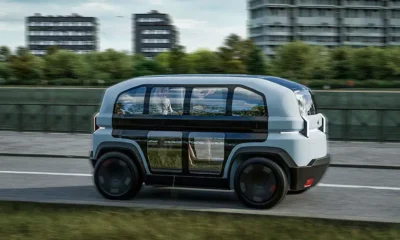News
Rain Driving: These are The Dos and The Don’ts
Published
7 years agoon
It is the time of year with lots of rainfall and unfortunately with rain comes , automobile accidents. According to the Nigeria Automotive Council (NAC) one quarter of all road accidents (or 1.5 million per year) are weather-related, with the majority occurring on wet pavement and/or in the rain.
Wet driving conditions can be hazardous for a number of reasons. Roads that are wet from the rain build up a film of water and grease that make it more difficult for tires to gain traction. Additionally, driver visibility decreases greatly in rainy conditions.
While most of us cannot avoid driving in the rain altogether, we can take extra precautions to be vigilant and practice the best road safety when we do.
Below is a selection of expert tips for avoiding accidents while driving in the rain:
15. Demist your front and back windscreens .
14. Do not use your high beam headlights.
13. When driving through water .Driving through water. Generally, if the water is deeper than the bottom of your doors or the bottom third of your wheels, it is inadvisable to attempt driving through it. Use extreme caution, slow right down, it is important to watch the flow of the water and how fast it is going. If the water is too high seek a different route rather than braving the flood and risking damage to your electronic control systems.
12. Drive in the tracks of the car in front .
11. Steer into the skid.
10. Engage in regular auto maintenance.
9. Be aware of the most dangerous driving conditions.
8. Do not use cruise control.
7. Use your headlights, but not your high beams.
6. Be wary of water collected on the road.
5. Tap your breaks lightly after crossing through a puddle. This will help dry out some of the water on your rotors.
4. Use the center lanes.
Water tends to collect on the side of the roads, so drive as closely to the center of the road as you can without crossing over the yellow lines or being a hazard to cars around you.
3. Avoid using the breaks when possible.
If it is safe to do so, slow down by releasing your foot from the gas pedal rather than hitting the breaks. When you do need to use your breaks, try to break as early as possible to alert drivers behind you that you are slowing down, and apply a steady but firm pressure.
2. Maintain a proper distance between your own car and the car in front of you. Under normal conditions, there should be a three second gap, but in the rain, cars need two to three times more stopping distance.
1. Slow Down!
AutoReportNG is your one-stop place for quality news on roads, cars, and anything pertaining to mobility. We keep track of all current news in road, rails, and aviation. We are known to true, factual and investigative news.

You may like
-


An Overview Of The Reconstruction of the Bus Stop Gate-Oje-Beere-Oja Oba-Molete Under Bridge Road
-


LASG To Boost Water Transportation With Launch Of 25 New Ferries
-


Crosser V1 Amphibious Mobility System by Bernardo Pereira
-


Hyundai Ioniq 7 Three Row Electric SUV Set To Debut In Summer
-


Court Orders FAAN To Account For Airports Toll Gate Revenue Since 2015
-


Navy Intercepts 15,540 Litres Of Petrol In Badagry


You must be logged in to post a comment Login